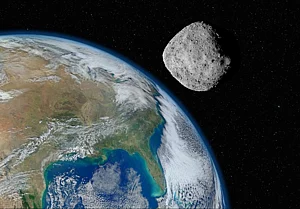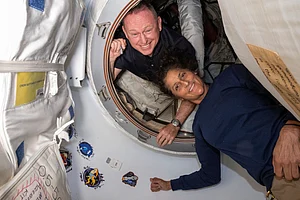
Name: National Aeronautics and Space Administration or NASA
NASA, stands as a pinnacle of human achievement and scientific exploration. It was established during the height of the Cold War, NASA emerged as the United States' response to the Soviet Union's launch of Sputnik 1, the world's first artificial satellite. This event not only shocked the American public but also ignited a fierce competition known as the Space Race. President Dwight D. Eisenhower, recognizing the need for a dedicated civilian space agency, signed the National Aeronautics and Space Act on July 29, 1958, officially bringing NASA into existence. The agency began its operations on October 1 of the same year, absorbing the National Advisory Committee for Aeronautics (NACA) and other research organizations, setting the stage for an era of unprecedented scientific and technological advancement.
From its inception, NASA was tasked with ambitious goals that would push the boundaries of human knowledge and capability. These objectives included expanding our understanding of Earth's atmosphere and space, improving the performance and safety of aeronautical and space vehicles, developing spacecraft capable of carrying instruments and living organisms through space, and establishing long-range studies of space exploration's potential benefits. These foundational goals have guided NASA's mission for decades, evolving with the times but always maintaining a focus on exploration, discovery, and the betterment of humanity through scientific advancement.
The early years of NASA were marked by rapid progress and historic achievements. The Mercury program, NASA's first human spaceflight program, aimed to put an American in Earth orbit and return him safely. On May 5, 1961, astronaut Alan Shepard became the first American in space during a suborbital flight, and on February 20, 1962, John Glenn became the first American to orbit the Earth. These early successes bolstered public support for space exploration and set the stage for even more ambitious endeavors. The Gemini program followed, focusing on developing techniques for advanced space travel, including long-duration flights, rendezvous and docking in orbit, and extravehicular activities (spacewalks). These missions were crucial in preparing for the ultimate goal of landing humans on the Moon.
The Apollo program represents one of NASA's crowning achievements and arguably one of humanity's greatest accomplishments. Initiated by President John F. Kennedy in 1961 with the goal of landing a man on the Moon and returning him safely to Earth by the end of the decade, Apollo pushed the boundaries of technology, engineering, and human endurance. On July 20, 1969, astronauts Neil Armstrong and Buzz Aldrin became the first humans to set foot on another celestial body, uttering the now-famous words, "That's one small step for man, one giant leap for mankind." This monumental achievement not only won the Space Race for the United States but also inspired generations of scientists, engineers, and dreamers around the world.
Following the success of Apollo, NASA turned its attention to new frontiers. The Skylab program, America's first space station, allowed astronauts to conduct extended scientific research in space. The Apollo-Soyuz Test Project in 1975 marked the first international human spaceflight, symbolizing a thaw in Cold War tensions and paving the way for future international cooperation in space exploration. The Space Shuttle era, beginning in 1981, revolutionized space travel by introducing a reusable spacecraft capable of launching like a rocket and landing like an airplane. Over its 30-year history, the Space Shuttle fleet conducted numerous scientific missions, deployed and serviced satellites, and played a crucial role in constructing the International Space Station (ISS).
The International Space Station, a joint project involving space agencies from the United States, Russia, Europe, Japan, and Canada, represents one of the most ambitious international scientific and engineering projects ever undertaken. Since its first component was launched in 1998, the ISS has been continuously occupied since November 2000, serving as a microgravity and space environment research laboratory. The station has hosted hundreds of scientific experiments, advancing our understanding of biology, physics, astronomy, and human physiology in space. It also serves as a testing ground for technologies needed for future long-duration space missions, including potential journeys to Mars.
Throughout its history, NASA has not limited its focus to human spaceflight. The agency has been responsible for numerous robotic exploration missions that have greatly expanded our understanding of the solar system and beyond. The Mariner, Viking, and Voyager programs explored the inner and outer planets, with Voyager 1 and 2 continuing to send data from interstellar space. The Mars Exploration Program has sent multiple orbiters, landers, and rovers to the Red Planet, including the highly successful Spirit, Opportunity, and Curiosity rovers, and the more recent Perseverance rover and Ingenuity helicopter. These missions have revolutionized our understanding of Mars, providing evidence of past water activity and raising tantalizing questions about the possibility of past or present microbial life.
NASA's contributions to Earth science have been equally significant. Satellites like Landsat, Terra, Aqua, and the Global Precipitation Measurement mission provide crucial data on climate change, weather patterns, natural disasters, and land use changes. This information is vital for environmental monitoring, resource management, and disaster response. The agency's Earth Observing System (EOS) comprises a series of artificial satellites and scientific instruments in Earth orbit designed to monitor long-term global changes in the Earth's atmosphere, biosphere, hydrosphere, and geosphere.
In the realm of astrophysics, NASA has launched a series of Great Observatories, including the Hubble Space Telescope, Compton Gamma Ray Observatory, Chandra X-ray Observatory, and Spitzer Space Telescope. These instruments have provided unprecedented views of the universe, from neighboring planets to the farthest reaches of space and time. The Hubble Space Telescope, in particular, has been instrumental in determining the age of the universe, observing the birth and death of stars, and studying the formation and evolution of galaxies. More recently, the James Webb Space Telescope, launched in December 2021, promises to push the boundaries of our understanding even further, peering back to the early universe and studying exoplanets in unprecedented detail.
NASA's aeronautics research has led to significant advancements in aviation technology. The agency's work has contributed to improvements in aircraft design, fuel efficiency, noise reduction, and safety. From the development of winglets to reduce drag and improve fuel efficiency to the creation of ice-detection systems for safer flights, NASA's innovations have had a profound impact on commercial and military aviation. The agency continues to work on cutting-edge concepts like supersonic flight without sonic booms and electric propulsion for aircraft, aiming to make air travel more efficient, environmentally friendly, and accessible.
Technology transfer and spinoffs represent another crucial aspect of NASA's impact on everyday life. Many technologies developed for space exploration have found applications in various industries, improving life on Earth. These include memory foam, scratch-resistant lenses, cordless tools, water purification systems, and improvements in food safety. NASA's research has also contributed to advancements in medical technology, including improved artificial limbs, ventricular assist devices, and breast cancer detection technology. The agency's commitment to sharing its innovations has led to the creation of thousands of spinoff technologies that benefit society in areas ranging from health and medicine to consumer goods and environmental and agricultural resources.
Looking to the future, NASA continues to push the boundaries of exploration and scientific discovery. The Artemis program aims to return humans to the Moon by 2024, with the goal of establishing a sustainable presence on and around the lunar surface. This ambitious project will serve as a stepping stone for future crewed missions to Mars and other destinations in the solar system. The Gateway, a small space station in lunar orbit, will serve as a staging point for both robotic and crewed exploration of the lunar surface and, eventually, for deeper space missions.
Mars remains a key focus for NASA's future plans. The agency is working on technologies and mission concepts for human exploration of the Red Planet, including advanced propulsion systems, habitat designs, and methods for utilizing local resources. Robotic missions continue to pave the way, with future plans including a Mars Sample Return mission to bring Martian rocks and soil back to Earth for detailed study.
In the field of space technology, NASA is investing in revolutionary concepts that could transform space exploration. These include advanced propulsion technologies like solar electric propulsion and nuclear thermal propulsion, which could significantly reduce travel times to distant destinations. The agency is also developing technologies for in-situ resource utilization, which would allow future explorers to "live off the land" by using resources available on other planets or moons.
NASA's Earth science missions will continue to play a crucial role in understanding and addressing global environmental challenges. Future satellites and instruments will provide even more detailed data on climate change, sea level rise, and other Earth system processes. The agency's expertise in Earth observation will be crucial in monitoring and mitigating the effects of climate change, informing policy decisions, and supporting sustainable development practices.
In astrophysics, NASA has ambitious plans to further our understanding of the universe. Future missions like the Nancy Grace Roman Space Telescope will study dark energy and exoplanets, while concepts like the Large UV/Optical/IR Surveyor (LUVOIR) could provide even more powerful observations than the Hubble and James Webb Space Telescopes. The agency is also investing in the search for extraterrestrial intelligence (SETI) and the study of potentially habitable worlds around other stars.
NASA's commitment to international cooperation continues to grow, with partnerships extending beyond the International Space Station. The agency is working with international partners on lunar exploration through the Artemis Accords, a set of principles for peaceful and cooperative exploration of the Moon. These collaborations not only pool resources and expertise but also foster diplomatic relations and promote global unity in the pursuit of scientific knowledge.
Education and public outreach remain key components of NASA's mission. The agency's efforts to inspire the next generation of scientists, engineers, and explorers include educational programs, internships, and public engagement initiatives. NASA's use of social media and digital platforms has allowed it to connect with millions of people worldwide, sharing the excitement of space exploration and scientific discovery.
As NASA moves forward, it faces both challenges and opportunities. Funding constraints and shifting political priorities can impact long-term planning and mission continuity. The growing role of commercial space companies presents both opportunities for collaboration and potential competition. Ensuring the safety of astronauts on long-duration missions beyond low Earth orbit presents significant technical and medical challenges. However, NASA's history of overcoming obstacles and achieving the seemingly impossible provides confidence in its ability to meet these challenges.









.webp?auto=format%2Ccompress&fit=max&format=webp&w=300&dpr=1.0)
















